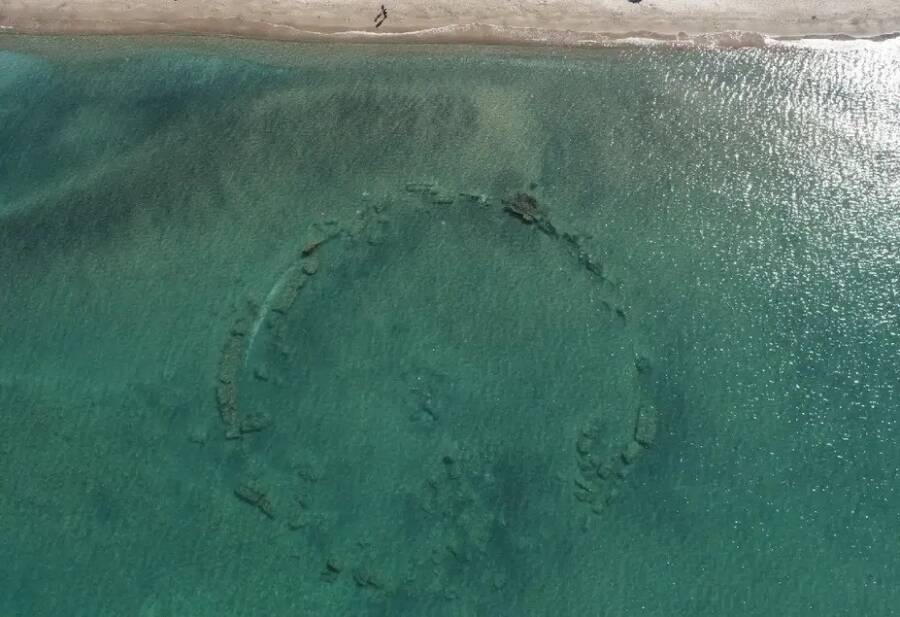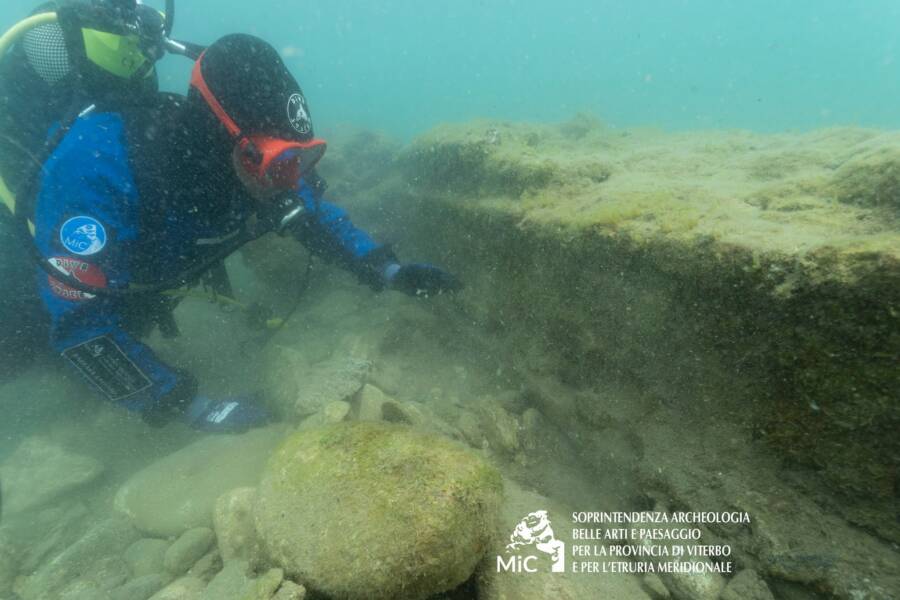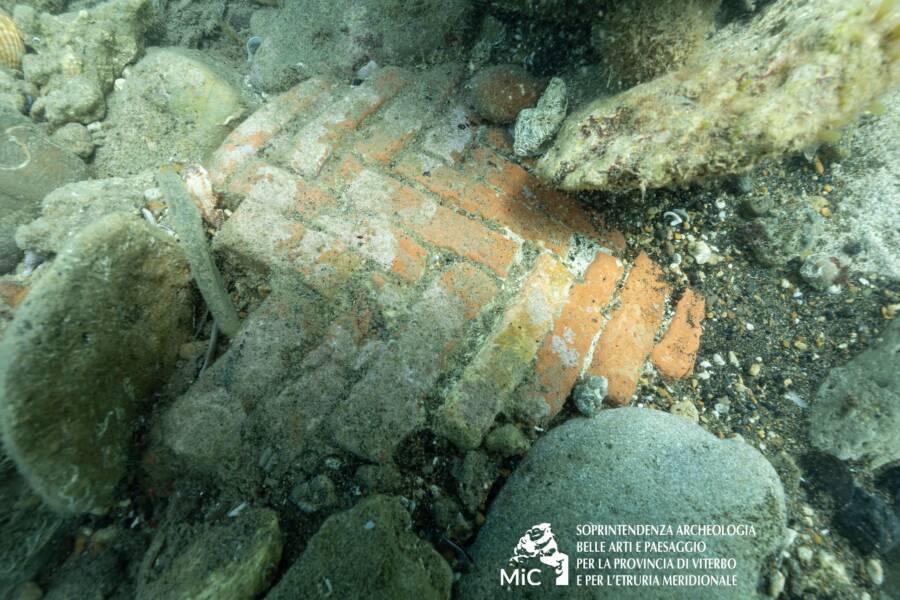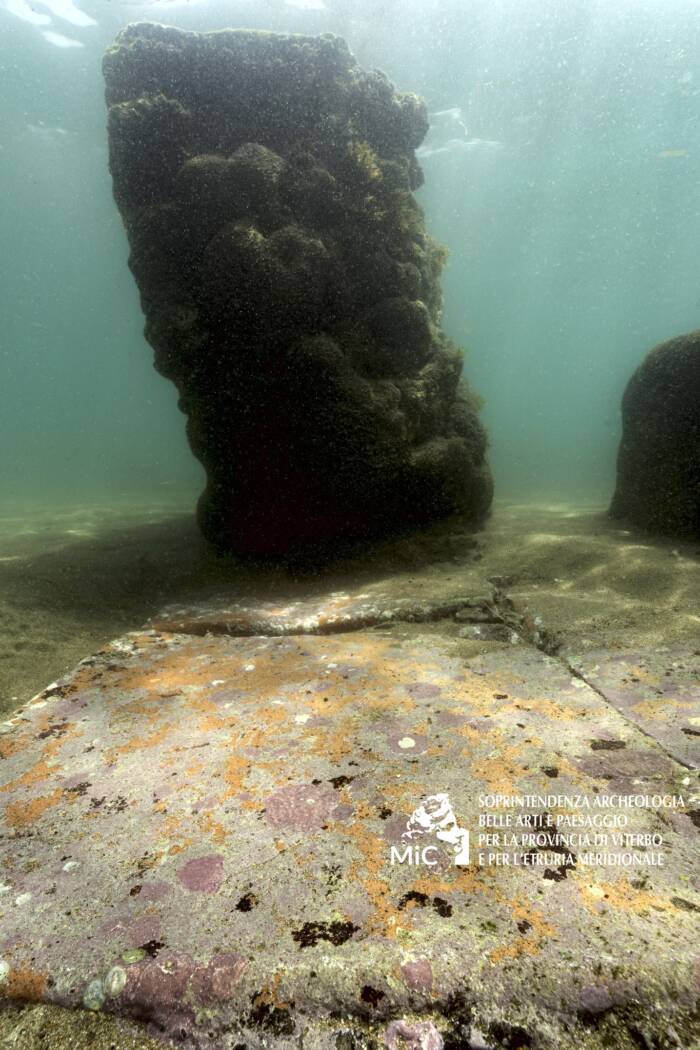Dating back to at least the second century C.E., this structure may have been part of an aristocrat's lavish beachside villa.

Superintendence of Archaeology Fine Arts Landscape Southern EtruriaThe submerged Roman structure in Campo di Mare as seen from above.
For some 2,000 years, the calm turquoise waters off the coast of Campo di Mare, Italy, held a secret. Right beneath the gentle waves, an ancient Roman structure — perhaps part of a vast villa — lay hidden, just out of sight.
Now, archaeologists have started to examine the submerged structure, and have found hints of its former grandeur.
The Submerged Roman Structure At Campo Di Mare
According to a statement from the Soprintendenza Archeologia Belle Arti Paesaggio Etruria Meridionale (Superintendence of Archaeology Fine Arts Landscape Southern Etruria), the structure was discovered off the coast of Campo di Mare, a small town in Cerveteri, Italy.
In 2021, archaeologists found a column made from cipollino marble, which led to the discovery of the structure nearby. According to the press release, it’s “a circular structure with a diameter of about 50 meters [164 feet], today completely underwater and a few meters from the shore.”

Superintendence of Archaeology Fine Arts Landscape Southern EtruriaAn underwater archaeologist explores the structure found just off the shore in Campo di Mare, Italy.
Underwater archaeologists were able to identify certain architectural features of the structure, including walls constructed out of triangular bricks and mortar. They also came upon a kind of flooring known as opus spicatum in which bricks are laid in a herringbone pattern.
They also identified traces of opus signinum, Roman concrete made from broken pots, tiles, or bricks. Because of its waterproof properties, opus signinum was often used in Roman baths, aqueducts, and cisterns.

Superintendence of Archaeology Fine Arts Landscape Southern EtruriaUnderwater archaeologists identified a number of architectural details in the structure, including this brick floor.
So what exactly was the purpose of this structure?
According to the the Soprintendenza Archeologia Belle Arti Paesaggio Etruria Meridionale press release, it “probably [can be] interpreted as a pavilion by the sea related to a Roman villa, the extent of which is currently unknown.”
Hints Of A Grand Roman Villa
According to the statement, “Everything suggests an extremely elegant and representative structure, certainly in contact with water, pertinent to a villa that has yet to be discovered probably still under the sand.”
Because the structure is close to Rome (about 25 miles away) and near the ancient Via Aurelia, archaeologists have speculated that it “perhaps [belonged] to some representative of the Roman aristocracy.”

Superintendence of Archaeology Fine Arts Landscape Southern EtruriaA part of the ancient structure which, because of its proximity to Rome, may have belonged to a member of the Roman aristocracy.
However, many questions still remain about the structure. Not only are archaeologists unsure about who may have built it, but they’re also not yet sure how old it is. That said, the use of opus signinum began in the first century B.C.E. and was phased out by the second century C.E. — so it’s likely that the structure fits within that timeline.
Still, there’s plenty more for archaeologists to learn. The structure’s exact purpose remains unknown, as does the tantalizing possibility that it’s connected to an even larger Roman villa that may be buried under the sand. After discovering and examining the site, archaeologists next plan to figure out how to protect it.
“This is a first intervention, aimed at understanding the ancient visible remains,” the press released noted, “but which will necessarily have a follow-up for the protection and safeguarding of the site.”
After reading about the submerged Roman structure found in Campo di Mare, discover the story of Baiae, the sunken party town of ancient Rome. Then, enjoy these fascinating facts about life in ancient Rome.





